The tweet was borderline militant. Rude. Snide. Smug. And so misinformed that I almost replied with an equally aggressive insult.
Sadly, this is what the well-intentioned catch-and-release movement has come to:
“It’s called catch-and-release. Catch-and-RELEASE. Check into it.”
I held my temper. I suppose, with a Twitter handle like @eatmorebrookies, I kind of brought it on myself. I simply replied, “Where I live, non-native brook trout are invasive and taking over native cutthroat habitat.” A little information can be a good thing, right?
The catch-and-release movement is perhaps one of the most effective, self-imposed conservation campaigns ever. It ranks right up there with America’s hunters imposing on themselves tighter bag limits. It was vital to the future of the pastime, just as catch-and-release has been vital to the future of fishing. Those who catch and release all, or even some, of the fish they bring to hand can take a good portion of the credit for the overall health of some of our best-known American trout fisheries. Famous rivers, like the Henry’s Fork or the Roaring Fork or the Delaware, likely wouldn’t be the angling destinations they are today without anglers foregoing the legal limits and leaving fish in the river for the next angler—and for the next spawning run.
But, as is the case with almost everything inherently good, too much of it can have undesired ill effects. Sometimes, as is almost always the case with brook trout west of Minnesota, catching and keeping fish for the grill or the smoker is the right thing to do. And, thankfully, the original “tweeter” was quick to see the light after I explained how brookies are truly a scourge here in the West, where they’ve outcompeted native cutthroat in thousands of streams across the region.
“Sorry for my Midwestern/Easter bias. Thanks for the education!”
You betcha. But it shouldn’t end there.
There are more than a handful of locations where harvesting and happily eating fish is the right thing to do for the overall health of the fishery. And frankly, for some, it won’t be easy. I’ve been in the throes of this dilemma a few times—a non-native, invasive fish resting in my hands in a stretch of water in which it doesn’t belong. I’m guilty of letting a few go, because voluntarily killing fish is all but gone from my DNA. But I’m getting better. I’m not so quick to discount the impact a knock on the head and a hefty over-the-shoulder toss can have on a river where exotic fish are pushing the natives out.
So, here goes:

What: Cuttbow (hybridized rainbow/cutthroat trout)
Where: The South Fork of the Snake River, Idaho
This river is famous for its native cutthroats that always look up and for its imported browns that, come fall, are among the most sought-after fish in America. But it’s also home to non-native rainbow trout that can and do mingle on the spawning redds with native Yellowstone cutthroat trout. The product of this unholy union is a fertile hybrid many call a “cutt-bow,” and these fish are contributing greatly the genetic dilution of the South Fork’s native fish. The good news is that the Idaho Department of Fish and Game encourages the catching and killing of rainbows and hybrids and has done quite a bit to ensure anglers have the information they need to help protect native cutthroats before they hit the water. Essentially, fish with white fin tips—even if they have some tell-tale cutthroat features, like the red slash behind the gills—should be harvested. And they should be harvested guilt-free. Keep them. Eat them. They’re damn tasty. Why not the same ire for the river’s browns? Certainly, the ravenous brown trout of the South Fork eat their share of cutthroats. Fortunately, browns are fall spawners and cutthroats are spring spawners—browns and cutthroats in the South Fork have arrived at a fairly tenuous, but consistent balance. The rainbows, because they can spawn with cutthroats, are a much more dire threat.
What: Pike, Walleye, Smallmouth Bass
Where: The Green River, Utah
Years ago, fisheries managers in Colorado, in a move they’d probably like to have back, introduced northern pike to the Yampa River near the town of Craig. And the pike loved it, largely because the Yampa produces a seemingly endless buffet of rainbow and brown trout in the river upstream all the way to Steamboat Springs, and a host of native—and endangered—fish like humpback and bony-tailed chubs, razorback suckers and northern pikeminnows in the froggy water that eventually joins the Green in far northwest Colorado. The pike have moved downriver from the Yampa into the Green, and now they’re showing up in the renowned trout water below Flaming Gorge Reservoir. To add insult to injury, walleye and now smallmouth bass from Flaming Gorge are showing up in river, too. These invaders should be killed for the benefit of the economically vital trout fishery below the town of Dutch John.

What: Pike
Where: Spinney Mountain Reservoir, Colorado
When Spinney opened in the spring of 1983, it was perhaps the West’s best trophy trout fishery. Massive rainbows, cutthroats and browns were yanked out of the lake by float-tube bound fly anglers, and its reputation grew quickly. As a new reservoir on the South Platte River installed by the city of Aurora, Colo., the lake was amazingly productive. Then, somehow, northern pike, likely from Elevenmile Reservoir downstream on the South Platte, found their way into the lake, and, predictably, the trout fishery began to decline. By the mid-1990s, Spinney had declined precipitously, and fisheries managers in Colorado were forced to react. Today, there’s no limit on pike in Spinney, and what’s resulted is a slow improvement in the lakes’s trout fishery, and something of a sustainable fishery for pike (Spinney will likely always have pike, since not everyone keeps the fish they catch). Unfortunately, the mere presence of pike will likely keep Spinney’s trout reputation from ever matching its former greatness, but if more anglers kept the invasive pike they caught in Spinney—and in downstream Elevenmile—the lake could again be one of the best stillwater destinations in the West.

What: Lake Trout
Where: Yellowstone Lake, Yellowstone National Park
In the early 1990s, invasive lake trout native to Great Lakes were found in Yellowstone Lake. Over the next 20 years or so, the population of the lake’s native Yellowstone cutthroat trout declined by a whopping 90 percent. Lakers are predators. They eat other fish, and in this case, they literally ate away at the vast majority of Yellowstone’s signature native fish, and the opportunity to pursue them for the average angler. Certainly, lake trout provide a recreational opportunity for trollers equipped with downriggers and heavy terminal gear (lake trout live in deep water most of the year, where they’re not available to eagles, ospreys, pelicans, otters, bears, etc.), but traditional fly fishing for cutthroat trout in destination fisheries like the famed Thoroughfare on the Yellowstone River above the lake, and in the river below the lake declined to the point to where those fisheries were all but dead. Thankfully, the National Park Service, along with conservation groups including Trout Unlimited, the Yellowstone Park Foundation and the Greater Yellowstone Coalition embarked on a lake-trout removal effort that killed more than a million lake trout since mid-2000s. A complex network of telemetry equipment, “judas” lakers implanted with radio transponders and a fleet of net boats have helped turn the lake trout population from one of exponential growth to one that’s steady and maybe even on the decline. In recent years, Yellowstone Lake’s tributaries have seen an uptick in spawning cutthroats, and more young-of-the-year fish. Combine that with required catch-and-kill regulations for lake trout on Yellowstone Lake, and it appears that fisheries managers are on their way to saving Yellowstone cutthroat trout in the world’s first national park. Lake trout are “available” to fly fishing and traditional anglers from boats, tubes and the bank right after ice-out (late May and early June) and again in the fall when they move to shallow shoals and creek mouths to spawn. If you’re in Yellowstone and want to do native fish a favor, kill a lake trout.
What: Brook trout
Where: The West
In the late 1800s and through the 1900s, brook trout from Appalachia and the upper Midwest were planted in rivers and streams all across the West. The cold, clean waters of the Rockies, the Sierra and the Cascades provided perfect habitat for these colorful char, and it didn’t take long for brookies to outcompete native cutthroats from Canadian border south to the desert trout strongholds of New Mexico and Arizona. Brookies are voracious fish—their life-force is unmatched. Since they spawn in the fall, and their eggs overwinter and hatch in early spring (just about the time native cutthroats are spawning), their offspring have a tactical advantage over cutthroats—by the time cutthroat eggs are hatching, brookies are months old and already taking a bite out of any given watershed’s food sources. Brook trout also tend overpopulate and “stunt,” leaving anglers with a host of very small, very beautiful and very exotic fishing targets. In the West, it’s almost never a bad idea to harvest brook trout. First, they’re delicious and easy to prepare over the campfire. Second, by knocking a few on the head, anglers can help build a more robust population that has fewer, but larger fish. Second, in watersheds where cutthroat trout are hanging on, removing brookies can help prolong the lives of native fish. Frankly, anglers who harvest brookies likely make a very small dent in their overall populations across the West. The only way to restore cutthroat trout from waters that have been overtaken by non-native brookies is to chemically “treat” entire stretches of streams and then reintroduce native fish.

What: Mayan Cichlid
Where: The Everglades, Florida
First introduced into the brackish waters of the Everglades from aquariums in the early 1980s, Mayan cichlids are become quite prominent in the brackish and fresh waters of south Florida. They are opportunistic feeders, and they can grow quite large. They’ll hit flies and lures, put up a solid fight on fly tackle, and they have become a recreational target. But, they compete with native fish in the region, and are part of a huge invasive species problem in the Everglades that include other fish like blue tilapia, walking catfish and suckermouth catfish, as well as more well-known invasive critters like pythons, nile monitors, feral cats and pigs, iguanas and, more recently, green anacondas. The fish that suffer include trophy game fish like largemouth bass, redfish, snook and tarpon.

What: Lionfish
Where: Gulf of Mexico, Atlantic Ocean and Caribbean Sea
First introduced to this hemisphere from south Pacific in the 1980s via aquarium escapees, lionfish are now prominent throughout the Gulf of Mexico and the Caribbean, with sightings now being recorded up the Atlantic coast all the way to Cape Cod. First, the threat. Lionfish are voracious—and venomous—predators that eat everything from shrimp and lobsters to snapper and grouper, all important fish from a recreational and economic standpoint. Perhaps more importantly, their sheer numbers are actually displacing entire reef ecosystems, which is perhaps the signature environmental feature of the region. To exacerbate the problem, lionfish don’t have natural predators in this hemisphere, which has led to their rapid habitat expansion throughout the region. The solution? There likely is no “silver bullet” to their removal or control, simply because they have become so prominent. But, according to Brandon Shuler of the Ocean Conservancy, they do provide a viable angling target. “They’ll hit the same flies that most other gamefish in the region will hit,” he explained. Presently, they are heavily fished by divers using spears and such, but Shuler says the fish, in chest-deep water over coral reefs can provide great sport on the fly, and targeting them should be encouraged. And, Shuler notes, lionfish, if handled safely (remember, those spines are venomous), provide excellent table fare. Releasing a lionfish in the region, in other words, is borderline criminal.
These are just a handful of examples of non-native, exotic fish that deserve a place in the frying pan rather than a friendly release into waters where they don’t belong.
Catch-and-release angling can likely be credited with saving recreational fishing in America, and fly fishers can take a lot of that credit. But, just as we evolved from purely consumptive fishers several decades ago into conservation-minded anglers who recognized the need to limit our catch in order to protect our fisheries and our opportunities, the time has come to evolve again. Native fish across America are under siege from exotic species that are invading their native habitat. No longer is it enough to release every fish we catch—it falls on anglers to be educated and aware, and for the exact reasons that spurred the catch-and-release movement: protecting our craft for generations to come.




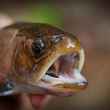


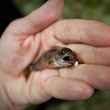



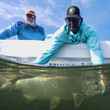
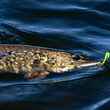



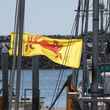
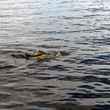



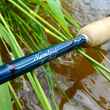




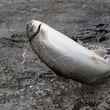



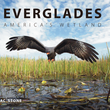
Comments
Dave Blair replied on Permalink
An excellent article. I appreciate the desire to inform all who use and enjoy our natural resources of clean water and fish. A major hurdle we face as anglers is in the education of others who may view our very same resources differently. It is true we use the same resources, but there are vastly differing opinions on how to use and enjoy them. This needed change in understanding will require a paradigm shift in the thinking of all outdoorsman as we deal with population increases, climate issues, water usage etc in the next 100+ years. It has been said "a sport fish is too valuable resource to be caught only once". Trout, specifically native trout, need to be brought to the forefront of discussion in the fishing world. This discussion needs to be brought to all angles, both fly and conventional. We need to educate outdoorsmen as to a fishes value as a sacred resource to be enjoyed by all. The trout should not be considered merely as a relatively inexpensive meal, without regards to how it came to be, or without a thought of the effect of its absence. All outdoorsmen should be encouraged to affiliate with a group of their choosing, that promotes conservation.
Flip replied on Permalink
I suppose this blog has a more Western bent, but you neglected to mention the scourge of the southern appalachians, the rainbow trout. Save a brookie, kill a rainbow.
What I would like to see implemented more widely is strict catch and release (or very low limits) on fish that are native to their drainage, while the introduced species such as rainbows, brookies, and browns have more liberal bag limits.
SJFinWNC replied on Permalink
Right on!
Chris Hunt replied on Permalink
Thanks for the note, and I couldn't agree more. Finding that sacred middle ground on this issue is important, particularly when it comes to native trout, where the vast majority of the damage has been done by fisheries managers many, many years ago who believed they were enhancing fisheries by giving anglers more opportunities rather than dooming native trout.
Ken replied on Permalink
You don't know what you're talking about.
Frank replied on Permalink
Cutbow are not always sterile. The rainbow trout actually evolved from the cutthroat in the sea of Cortez. They are quite capable of interbreeding and producing fertile offspring depending on the purity of their genetics.
Nick Davis replied on Permalink
Hey Chris - a great and timely piece, thanks for the work! As an almost exclusively C&R angler myself, I also think it important to kill and eat fish (even trout!) at times, simply to remind ourselves that fishing is indeed a blood sport. While I fully support all the ecological benefits of C&R, I believe it can distance anglers from the moral weight of the predator-prey relationship, which is not a good thing. Keep up the good work, and let me know next time you're in Missoula!
Chris replied on Permalink
You got it, Nick!
Anonymous replied on Permalink
I prefer to kill them by breaking their necks by basically bending their nose back to touch their spine. It is a quick humane way to dispatch the fish but will tear the bottom gill which allows it to bleed and improves the flavor of the fish.
Anonymous replied on Permalink
Brown Trout can also be considered as invasive in the west. They are still planted and compete for food and predate on the natives. They do not cross breed, but can definitely hinder and reduce native populations.
John Sanderson replied on Permalink
Chris, thanks for your courage to write on this controversial topic. On the Yampa there is another big problem with pike: they eat endangered fish. More than half of the native fish in the Colorado River are at risk of extinction. Some of them--like the bonytail--now exist in the wild only because we stock them. I consider them "functionally extinct." And it's not just pike. Smallmouth bass are also big consumers of endangered fish. I once saw a photo of an 18 in smallmouth with a 12 in bonytail in its mouth!
Optoadwatr replied on Permalink
I think it is fishy...that you made no mention of brown trout. Seems biased. You're correct though, fundamentally. I just don't know if you are consistent or objective. Then again, those are not standards of fly fishing blogs. Ha, no offense to you but it is certainly rampant in this industry.
Luke replied on Permalink
Pike and smallmouth are certainly a problem on the Green, I am sure. But let's not forget, that the problems for the Colorado Pikeminnow and the bony-tail chubs began when the Green was rotenoned--killing off nearly all of the native fish--to make way for the trout fishery that is there now. As far as I'm concerned, we should probably be keeping all of the trout as well (and blasting the dam).
Toner Mitchell replied on Permalink
I take my legal limit of browns on any New Mexico stream with cutthroats in it. I bring friends so they can keep their limits too. Since boyhood, I've witnessed browns claiming more and more stream miles; we're taking 18 inchers up at timberline now, and fewer and fewer cutties. I do this with a clear conscience because a) Nick Davis' above point about reminding ourselves of our predator role teaches humility, b) getting to timberline is tough at my age, and eating fish reduces the food weight I have to carry in my pack, and c) I release all the rainbows and browns from bigger downstream fisheries like the Chama and Rio Grande that are beyond the point of restoration to their historic cutthroat state.
Bob Wyatt replied on Permalink
Good article, good sense. I remember Cataract Creek, a once great Alberta cutthroat stream that became infested with stunted brookies. They outbred and out- competed the natives in short order.
Pete replied on Permalink
I'm with you on this until you got to Bows and Browns. You're simply targeting bows because of their crossbreeding capabilities with cutties. The browns shouldn't be in there either but they get a pass because they are fun to fish and don't breed with the natives. Its the opposite back east where the browns and brookies are a big NoNo. Here rainbows get a pass since they and the brooks don't compete but they still shouldn't be in there to maintain the native stream. We can't play God even when we try
Pages